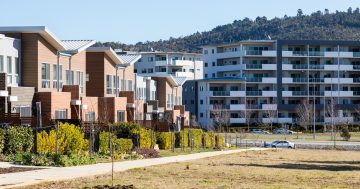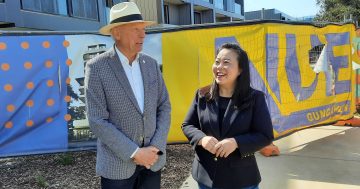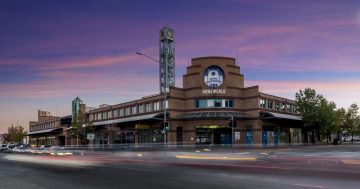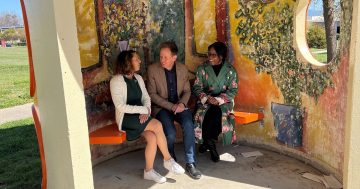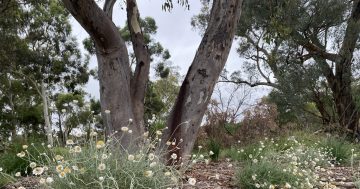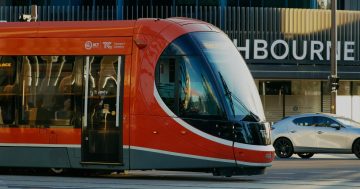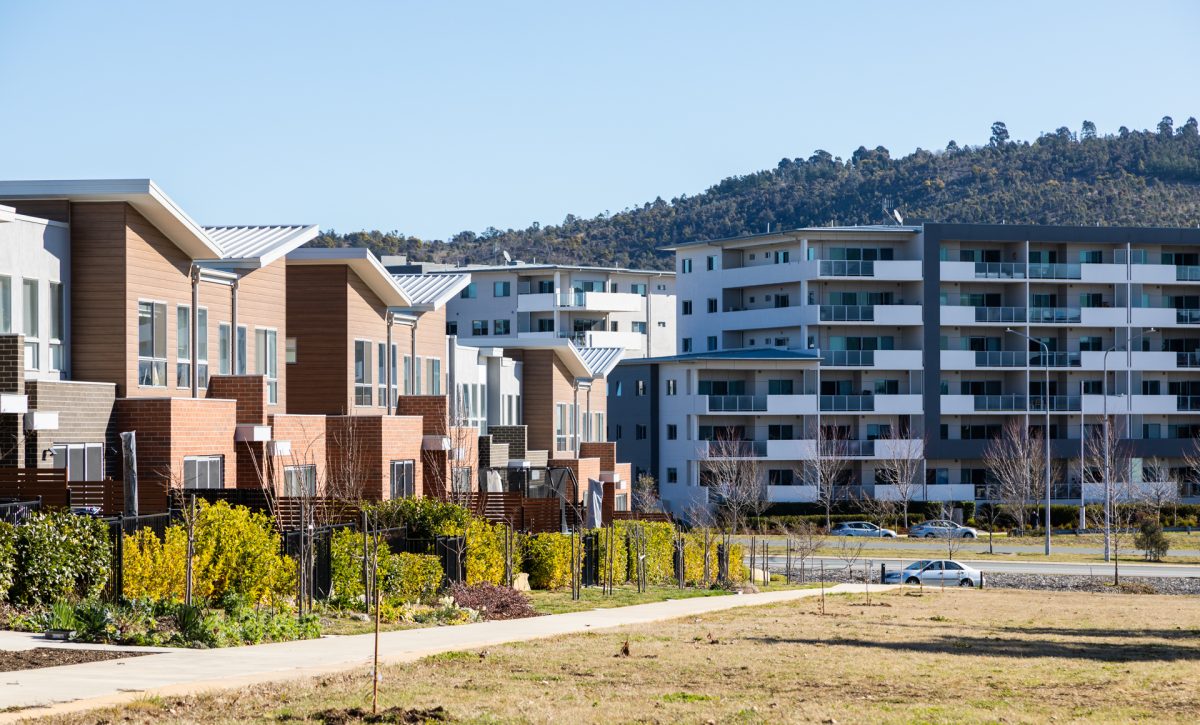
The Chief Minister said housing supply will need to be balanced between infill and new suburbs as Canberra continues to grow. Photo: Michelle Kroll.
“Legislate an urban growth boundary to contain urban expansion and achieve a compact, liveable and efficiently designed Canberra”: that’s the top recommendation from the latest State of the Environment report.
The last report from 2019 already noted the region’s population was growing and the city’s footprint expanding, with management of the balance between the natural and urban environments a continued theme in the 2023 report.
Environment Minister Rebecca Vassarotti said urbanisation was a key factor driving the loss of species and this needed to be managed into the future.
“Canberra’s urban footprint continues to expand in the north and west with several greenfield developments in the Molonglo Valley, Gungahlin and West Belconnen,” she said.
“The environmental costs of expanding Canberra’s footprint are immense, including clearance of habitat, disturbance of ecological communities, increased urban edge effects, and increased sedimentation and erosion from developments.
“If we are to achieve a compact and efficient city there is a need to prioritise limiting urban sprawl and focus on infill development, which involves increasing the intensification of housing in existing developed areas.”
Gentle urbanism and a balance between infill and greenfill spaces in the ACT have already been part of the government agenda, but the ACT Greens have signalled they think more should be done.
Party planning spokesperson Jo Clay said the report underscored the “desperate need” for the government to build housing without destroying the environment.
“The Commissioner for Sustainability and the Environment has herself said that the ACT’s rapid urban expansion must be stopped,” she said.
“Canberra has nearly the same footprint as Sydney, with a fraction of the population. This irresponsible and destructive way of development must stop.
“Labor and the Liberals are making it seem like we can only choose one: houses or the environment. But mature cities can manage a growing population by building within their existing limits.”
Ms Clay argued more houses should be built where suburbs have already been established so that the homes of animals and plants weren’t destroyed by our need for more space.
“By pitting housing and the environment against each other, Labor continues to ultimately neglect both,” she argued.
“In a climate crisis, we can’t just keep bulldozing our precious natural environment to build suburbs on the outskirts of town. Building on the outskirts of our city sets Canberrans up to fail. It delivers expensive infrastructure, poor services and long car commutes.
“A liveable city means a more compact, connected and convenient city with more options that suit more people.”
Ms Vassarotti took a different approach, stating the parties needed to look at how they could work together to both protect the environment and respond to the needs of a growing city.
“The environment and nature does not pay attention to the boundaries of government and we do need a whole-of-government response,” she said.
She also noted ideas such as green spaces and living infrastructure would become even more important for a more “compact city”.
“We need to make sure that when we are densifying, we are paying attention to the risks of things such as the heat island effect … our canopy, permeable spaces, and how we protect our green spaces,” Ms Vassarotti said.
In response to the debate, Chief Minister Andrew Barr pointed out that Canberra’s city limits were “largely” already determined in the national Capital Plan and the Territory Plan.
“Development is clearly not appropriate in national parks, water catchments, high risk bushfire areas and areas of high conservation value,” he said.
He reiterated that he felt the ACT’s housing supply needed to be balanced between infill and new suburbs.
“Some new suburbs will need to be built to meet the needs of the city’s growing population, alongside gradually increasing density in the existing city footprint,” Mr Barr said.
“This approach of gentle urbanism will, over time, result in more people living in our CBD, town centres, group centres and around our local shopping centres but we will also need some new suburbs.”
Other key findings from the report included that long term trends were showing the ACT was getting warmer, the ACT’s ecological footprint was now more than nine times the size of the Territory’s land area, continued high reliance on cars, native fish populations were under pressure, urban development was degrading water quality, and PM2.5 particles were the ACT’s most serious air quality issue.
It also noted progress towards creating a sustainable future for Canberra, highlighting the ACT’s 100 per cent renewable electricity grid, legislation to establish a net-zero target for greenhouse gas emissions, the ending of new gas network connections, and the adoption of a target for no net-waste sent to landfill sites.
The ACT Government will provide a formal response to this State of the Environment Report in the coming months.













